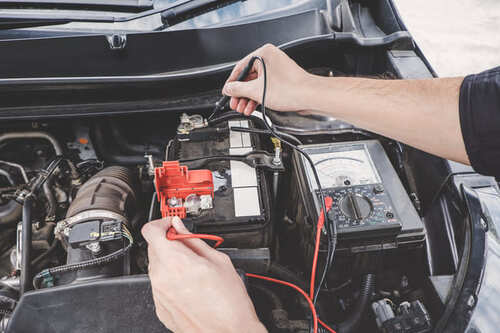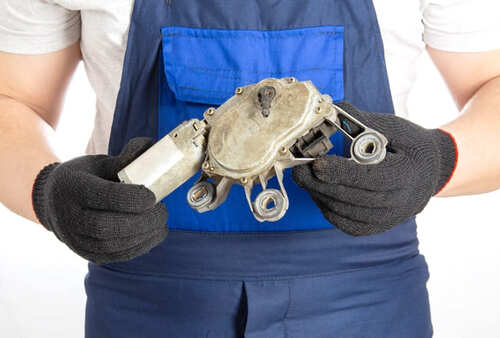Despite its reputation for durability, like any vehicle, problems are bound to crop up sometime. Let’s explore the most common Land Rover Defender faults and their causes, as well as how to solve them.
Starting problems

There are a variety of possible causes when it comes to a Land Rover that won’t start properly. The first that usually comes to mind is a flat battery as the car battery is responsible for supplying the starter motor with power. Other causes include a faulty starter motor, a defective ignition switch, damaged or loose electrical connections, and a blown fuse.
It is also sometimes caused by non-electrical faults, such as a clogged fuel filter, heavily contaminated spark plugs or an empty fuel tank. When attempting to diagnose the problem yourself, the first things to check are the fuel levels and whether the Land Rover Defender battery is charged. You should be able to test the battery using a multimeter.
You can find the parts and tools you need in the Land Rover Defender accessories and parts catalogue.
Fuel gauge problems
Some people report erratic fuel gauge readings or readings that fuel is low when the tank is full and high when it is empty. To determine whether there is an electrical fault, you can connect a diagnostic scanner to the vehicle’s onboard computer. Fault codes P0460, P0461, P0462, P0463 and P0464 all indicate a problem within the electrical circuit.
The culprit could be damaged or disconnected wires, a blown Land Rover Defender fuse, a broken sending unit or damage to the gauge mechanism itself.
Indicator fault and side light malfunctions
Malfunctioning indicators are usually a consequence of a bad hazard switch or indicator relay, as well as other potential electrical faults. If your side lights are not working, the bulbs should be the first things you check. If the bulbs are still in working condition, you may need to get a proper diagnosis of the electrical system. Replacing the faulty parts should fix the problem.
Transfer box troubles
This is an issue more commonly associated with older models than newer models as newer transfer boxes are generally more reliable. A recall was issued back in 2011 due to concerns about potential oil leaks between the transfer box output shaft and the drive flange. The danger here was that the oil could enter the parking brake drum and contaminate the linings, making the components less effective.
If the fluid leaks due to damaged seals, you could struggle to shift between gears and the four-wheel drive may fail to engage or disengage.
Brake problems
Defenders manufactured between 24. 10. 2014 and 5. 1. 2015 were subject to a recall after the brake flexi hose was found to be defective, increasing the risk of chafing and fluid leaks. Apart from general wear and tear, fluid leaks and contamination are leading causes of reduced brake power.
Some drivers complain that the brake pedal has become too stiff and hard to press. This is likely due to a problem or leak in the vacuum pump.
Window wiper defects

A number of Land Rover Defender owners have reported that their windscreen wipers are not working properly or won’t turn off or park correctly. In some cases this is due to an electrical fault like a blown fuse or corroded wires, in other cases it could be due to mechanical failure, loose wiper arms or a burned out Land Rover Defender wiper motor.
To prevent premature wear and failure, always make sure to clear away any heavy snow and ice from the windscreen before switching on the Land Rover Defender wiper blades.
Differential problems
While the P38 differentials are more advanced than the ones used in older Land Rovers, they have a reputation for being more breakdown prone. When buying a used vehicle, it is worth checking the service history to make sure the parts have been serviced and maintained regularly.
For offroad driving, the diff lock should be engaged. If it’s not working as it should be, there could be an issue with either the electrical connections or the actuator of the locking mechanism.
Top products related to this topic:
















































